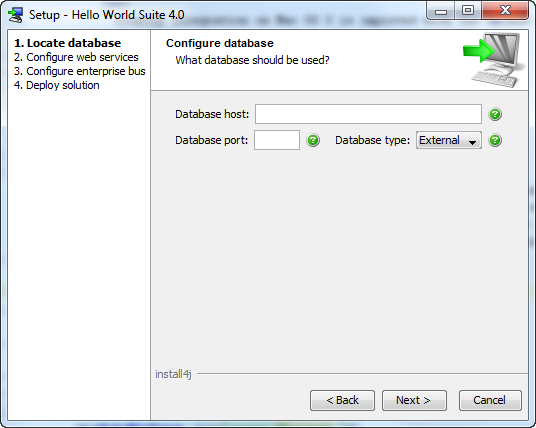

- #Rew install4j wizard drivers#
- #Rew install4j wizard driver#
- #Rew install4j wizard manual#
- #Rew install4j wizard free#
If you are using REW to measure a two-channel system with a USB microphone, you must use 5.15 beta 6 or later so that the speaker used for the acoustic timing reference can also be measured. REW uses the install4j multi-platform installer builder Reference Material Guy-Bart Stan, Jean-Jacques Embrechts, Dominique Archambeau, "Comparison of different impulse response measurement techniques", JAES Volume 50, Issue 4, pp.
#Rew install4j wizard drivers#
If an acoustic timing reference is selected the measurement dialog shows a control for the level of the timing reference signal and, when using Java drivers, which channel to use for the timing signal (with ASIO drivers REW uses the timing ref channel selected on the Soundcard preferences).
#Rew install4j wizard manual#
I have a different approach for that (already used for the manual correction feature) which looks to work well. REW can also be used for time domain measurements. Other speakers will have a different delay. Are you using acoustic timing with a USB mic? one that is at the default settings. I've already done the acoustic timing reference correction, today I'll add automatic correction for a loopback timing reference. REW can use an acoustic timing reference when doing measurements. In the right column there's a dropdown marked timing. On the Preferences screen click on the Soundcard tab, select a speaker to use for the timing reference in the "Timing Output Reference" box, and then select the speaker you want to measure in the "Output" box. The timing reference is a pair of controls on the measure window. While many people try improving the performance of their audio systems with higher-quality components, there is one component that most people miss: the listening room. If you are using a USB mic, the only valid way to get a timing reference in REW is by using its acoustic timing reference feature. Now run a measurement sweep, leaving the output channel set to "Right" and the reference channel set to "Left," as set previously. You should see plots that look as in the following example. The choice of timing reference is in the Analysis preferences.
#Rew install4j wizard driver#
In our example speaker, the midrange driver goes very high, so we used 1 kHz to 20 kHz. As well as letting REW know the timing reference speaker, you need to leave that speaker turned on!! Once all settings have been made, you can carry out your first measurement using the Start button! Basically, you click "use acoustic timing reference" in the measurements window. We can gain a better understanding by viewing the impulse response of the speakers.

This sends a high frequency reference signal to a speaker which then acts as the timing reference. (If not, move the cursor onto the plot and select %FS from the drop-down menu. If you need to set time delay in an output channel of a miniDSP processor in order to time-align different speakers, REW will show you the delay of the measured speaker relative to the timing reference.
#Rew install4j wizard free#
REW is a free acoustic analysis package, and is actually a lot better than some of the packages that cost money. In REW preference menu, tab analysis, box Impulse Response calculation, choose acoustic timing ref. ), Click on the "Measure" button (top left of the main window). If the value is negative (center and surrounds in our example), it means that the speaker being measured is closer than the timing reference.


 0 kommentar(er)
0 kommentar(er)
